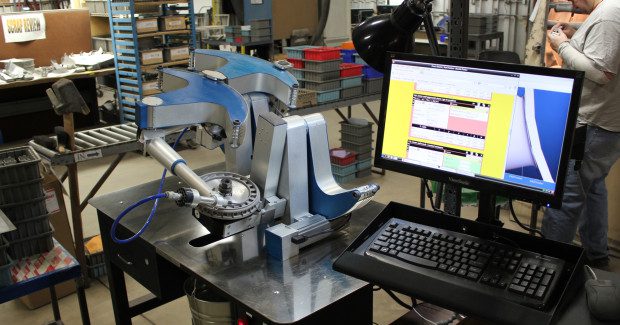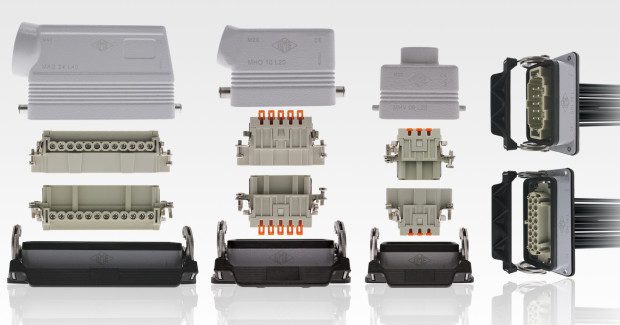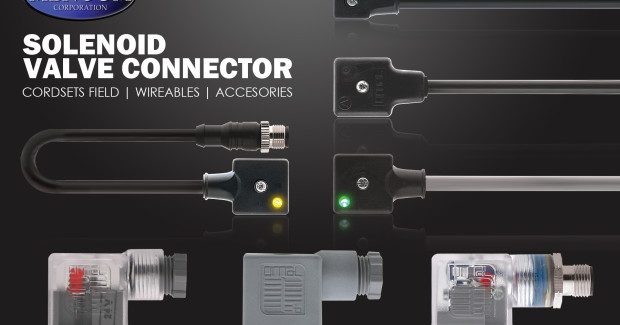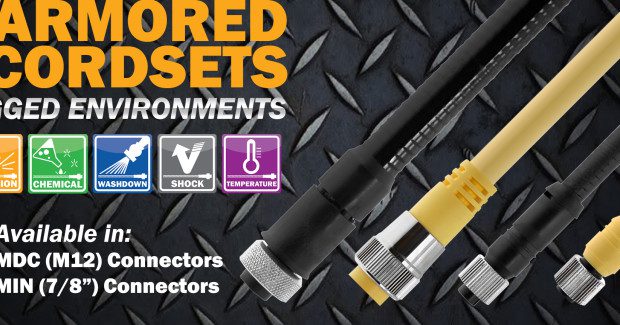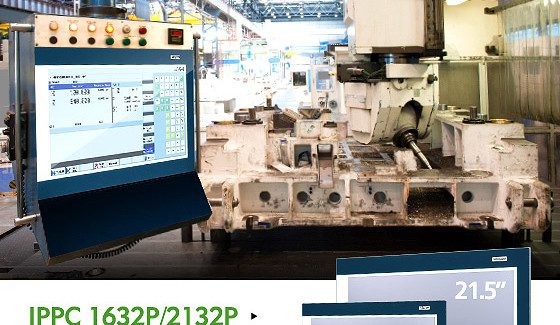IMTS 2014: Industrial Automation North America
Here is the place to find solutions for factory, process, and building automation.
Posted: August 5, 2014
ROBOTIC MACHINING AND GRINDING OF CASTINGS
In Booth E-4746, Force Robots LLC (Cleveland, OH) introduces a new robotic system called the Touch Robot that is able to perform precision grinding and machining to polish, deburr, and deflash cast and forged parts. Metal finishing with hand tools is a dirty and difficult job that carries known repetitive stress injury risk. It is also a process that has proven extremely difficult to automate. Force Robots’ system combines the precision of a machine with the finesse of the human hand to “feel” existing part contours, match it to a CAD reference, and autonomously work to remove material to specification.
The Cleveland foundry of Consolidated Precision Products Corporation is the first to use it to remove excess material on difficult-to-reach areas of tough, precision-cast turbine engine components. It has a simple and rugged construction suitable for a finishing department environment. No fragile force or optical sensing is required to perform its work: all needed feedback is derived from the motor encoders. Its inherent safety features allow it to be deployed alongside manual metal finishing cells. Joint limits restrict its .5 m reach largely to the work table on which it is mounted. Low motor supply voltage (24 Vdc) keeps joint speeds (max 300 deg/sec) below where the arm would develop dangerous levels of energy. With modest force capacity and low-friction, back-drivable joints, it is easily overpowered by a human.
A demonstration of the Touch Robot being used in machining away pin blips from the root section of a turbine blade.
According to Steven Somes, the company founder, it changes the paradigm for a robotic work cell. “Most robots have to work independently and in isolation, surrounded by complex feeding and sensing systems. Our systems are simple; they can be used like a labor-saving appliance. Operators can task it with the heaviest, most difficult material removal work, why they focus on fine finishing and inspection.” Turbine blade finishing presents a particular challenge because the parts require perfect smoothness on the micro level, while tolerating the macro-level dimensional variations of the casting process. That, plus the lack of easily referenced datum surfaces for locating, rules out machining to fixed coordinates.
The Touch Robot from Force Robots begins operation by locating the workpiece with contact measurements, using the material removal tool as the probe. Machining and grinding passes are then performed with a well-controlled, optimal contact force. With part geometry determining the tool path, the control software can identify the location and amount of excess material by comparing the tool trajectory to a CAD model reference. Automatically generated tool trajectories focus effort on the needed areas until the measured surface contour matches the CAD specification.
This closed-loop mode of operation means the system delivers robust results despite numerous process variations, including part fixturing, the amount of material needing to be removed, and the changing size and efficiency of the material removal tool. Despite initial geometry variation and uncertainty of up to several millimeters, the accuracy of the material removal is within a few tenths of a millimeter of the desired. This is because of the common datum reference between measurement and material removal. The absolute location of the workpiece is not important, only that the robot can discover it in the context of its material removal tool. Accuracy depends on the low error of differential kinematics.
While part geometry varies widely, the types of casting artifacts requiring finishing are relatively few, e.g. parting lines, pin blips, and core exit flash. The programming software uses a parametric approach that allows predetermined strategies for these feature types to be invoked on a wide array of parts. Part programs are generated by filling in blanks on sequentially arranged function blocks within a web browser interface. Material removal tool poses and transition waypoints are identified by manually guiding the robot and part to the desired positions. Areas requiring finishing are designated by annotations on the part’s CAD model within the provided software.
Tool trajectories, contact forces, and success metrics are dynamically generated at run time by the strategy using the user-provided parameters, geometry extracted from the CAD model, and self-acquired part measurements. The key to the system’s success at working by force is its duplication of the dynamics of the human arm: low-friction joints, smooth actuation, and low-inertia links. Each joint is driven by an anchor-shaped linkage with cables that attach at the tips and wrap across its arc-shaped perimeter. A brushless motor drives a capstan that winds the cables, imparting a magnifying torque to the linkage.
The drive has no backlash and is torsionally stiff. Without rubbing or sliding components, it requires no lubrication, is long-lived, and low in friction. The robot arm uses serially-connected cable drives for the first three joints and a compact harmonic drive actuator for the 4th tool joint. The part positioner uses a cable drive for its pitch axis and a direct-drive rotary stage for the yaw. www.forcerobots.com
ILME KITS AND PRE-WIRED RECEPTACLES
In Booth E-4674, Mencom Corporation (Oakwood, GA) will introduce its new ILME Kits, consisting of the main components needed to make your connection, along with pre-wired ILME receptacles. Both solutions are designed to help drastically reduce labor time and costs associated with product installation. ILME connectors are known for their high-quality construction and reliable connection. No more concerns about getting the right components to make your connection.
The ILME receptacles come fully wired. All you need to do is attach it to your panel and connect the wires inside your panel. The wires are all black with printed numbers to show their pin location. These receptacles are available in 6 pole to 24 pole configurations. The standard wire length will be 12 in, but can be made in longer lengths by request.
http://youtu.be/6ZSIREKr0So
An overview and demonstration of the ILME Tool-less Spring Insert.
Mencom will also introduce its Solenoid Valve Connectors. In engineering, the term solenoid refers to a variety of transducer devices that convert energy into linear motion. The term is also often used to refer to a solenoid valve, which is an integrated device containing an electromechanical solenoid which actuates either a pneumatic or hydraulic valve, or a solenoid switch. These connectors may either be purchased individually or as part of a molded cable assembly. Termination options also include field wireable, overmolded cable or pre-wired receptacles.
Also on display will be new Armored Cables for use in harsh manufacturing environments. One of the biggest challenges that every manufacturer struggle with is how to prevent downtime or outage caused by connection failure. Abusive manufacturing environments with extreme conditions are where these issues are most likely to take place. Sometimes it is difficult to diagnose and locate the exact problem of the failure because of its complex installation or location. Short and repetitive downtime with constant replacement is usually caused by cable failures and can be prevented by installing proper cables equipped with extra protection.In most cases, the downtime is usually caused by one of following conditions:
- Physical failure by repetitive impacts and abrasion with loaded components
- Damage by high pressure wash-down and cleaning chemical
- Damage by extreme temperature
- Weld Slag
Mencom Armored Cables are designed to prevent failure from such common causes above.
Founded in 1987, Mencom provides high quality, cost effective solutions that meet industrial electrical connector requirements, offering a complete line of custom-made and off-the-shelf electrical connectors that include:
- Molded cables and receptacles for sensors and actuators
- MINI, M23, M12, M8, Micro-AC, Euro AC, Device Net, Profi-bus, Foundation Field-bus
- Multi-pin industrial rectangular connectors for power and data lines
- Panel Interface Connectors for safe and quick reprogramming requirements
- DIN solenoid valve connectors for solenoids
- Junction Blocks for power & signal distribution
- Multi-port connector plates for multiple connections in a small space
- Conduit adapters for distribution of power & signal using conduit
- Ethernet connectors & switches for communication with a network
- A wide variety of metric, PG and NPT cable glands, fittings and adapters
With headquarters and warehouse facilities located in Oakwood, just north of Atlanta, Mencom is also the North American Master Distributor for ILME rectangular connectors. www.mencom.com
MULTI-TOUCH INDUSTRIAL FIELDBUS PANEL PCS FOR THE SMART FACTORY
Highly reliable and robust industrial fieldbus panel computers optimize smart factory operation. In Booth E-4541, NEXCOM International Co., Ltd. (Fremont, CA) displays two industrial fieldbus panel PCs, IPPC 1632P and IPPC 2132P, to manage factory floor operation. The industrial fieldbus panel PCs are based on Intel® Atom™ processor D2550 and have built-in fieldbus technology and a 15.6 in or 21.5 in widescreen multi-touch monitor. The IPPC 1632P and IPPC 2132P can pull raw data from and give command to field devices to optimize smart factory operation. The IPPC 1632P and IPPC 2132P are certified with UL60950, EN61000-6-2 and EN61000-6-4 standards and can stand up to the harshness in heavy industrial environment.
The industrial fieldbus panel PCs IPPC 1632P and 2132P are built with Hilscher Fieldbus technologies. Available with PROFINET, PROFIBUS, DeviceNet, EtherNet/IP and EtherCAT master interfaces, the IPPC 1632P and 2132P are PC-based panel consoles which can control PLCs, remote I/Os, and other field devices. They also support LAN, Wi-Fi, and 3G/4G communication via mini-PCIe expansion for data communication applications. The industrial fieldbus panel PCs come with a 15.6 in or 21.5 in 16:9 widescreen 10-point touch monitor and support up to full HD resolution. The industrial fieldbus panel PCs allow a side-by-side view of applications and onscreen keyboard and can prevent false action with compound key feature.
NEXCOM, an ISO-9001-certified company and a member of PICMG, PCI-SIG and the Intel® Intelligent Systems Alliance, is at the forefront of the competition by offering OEM, ODM and OBM designs for products such as innovative blade servers; network security appliances; industrial and embedded PC products such as single board computers, embedded boards and systems; CompactPCI CPU boards; industrial-grade server boards; and customized platforms.
Established in 1992, the company has since won several patents, awards, certifications for its high-quality products and service that meet international standards and worldwide customers’ requirements. To serve its worldwide customers well, NEXCOM, headquartered in Taipei, Taiwan, has set up seven subsidiaries in the U.S., the UK, France, Italy, Germany, China, and Japan, as well as distributors in the other parts of the world. www.NEXCOM.com



